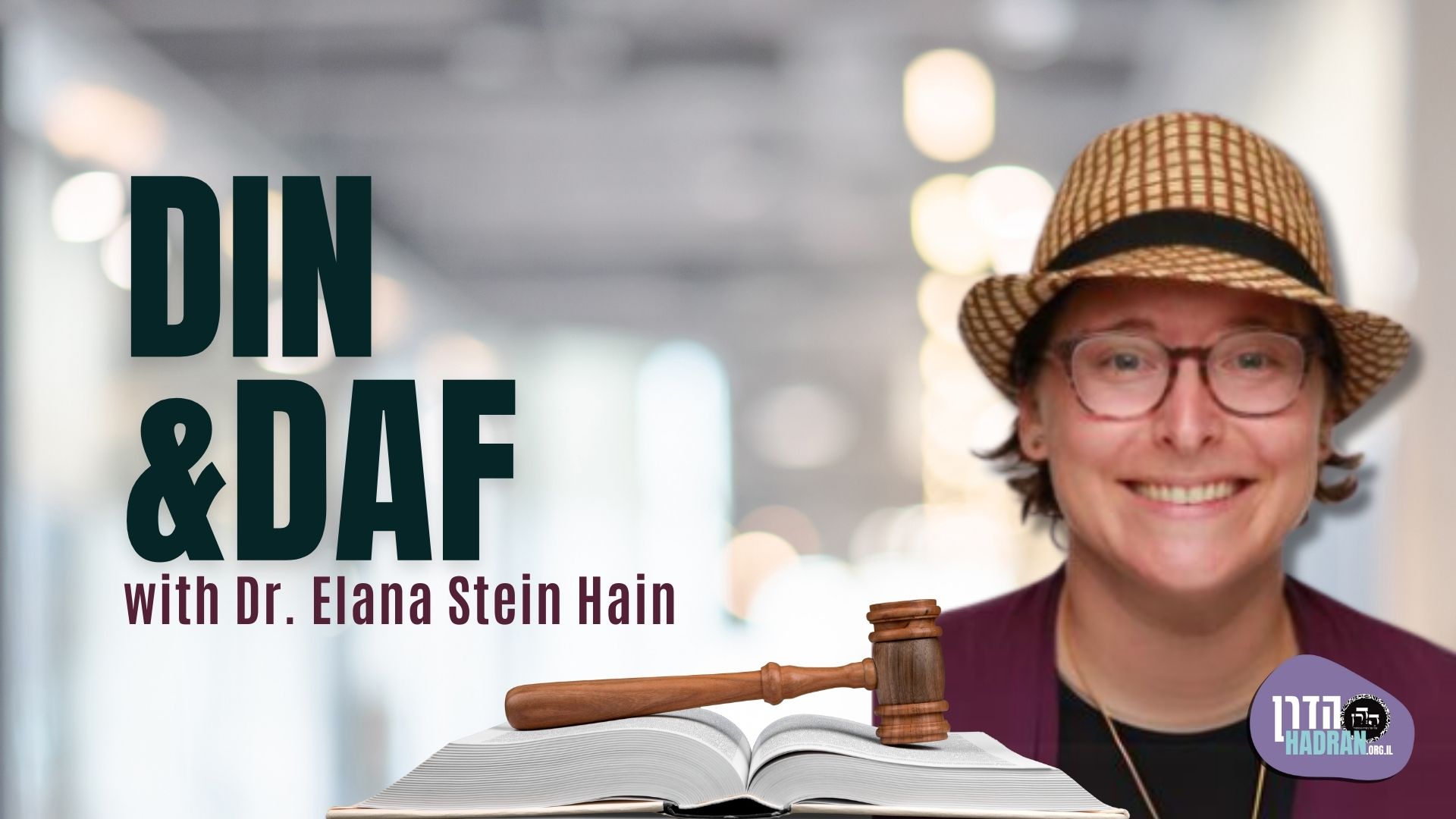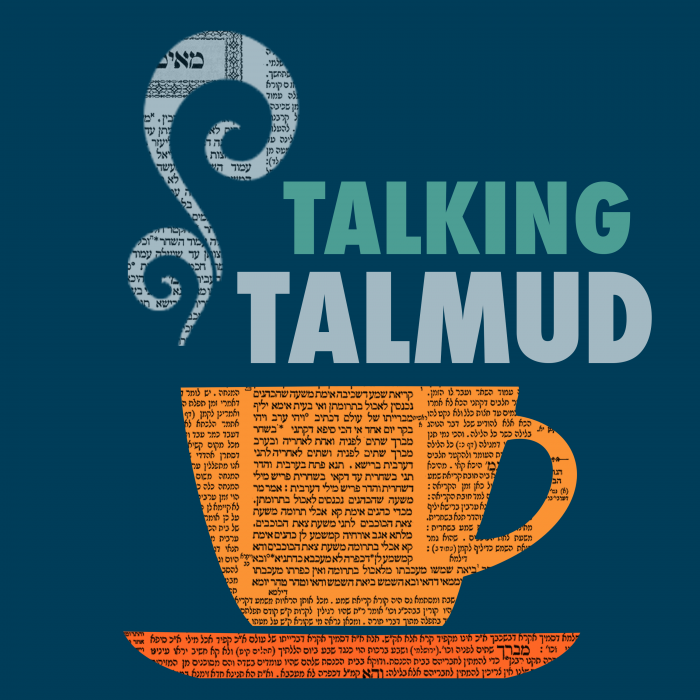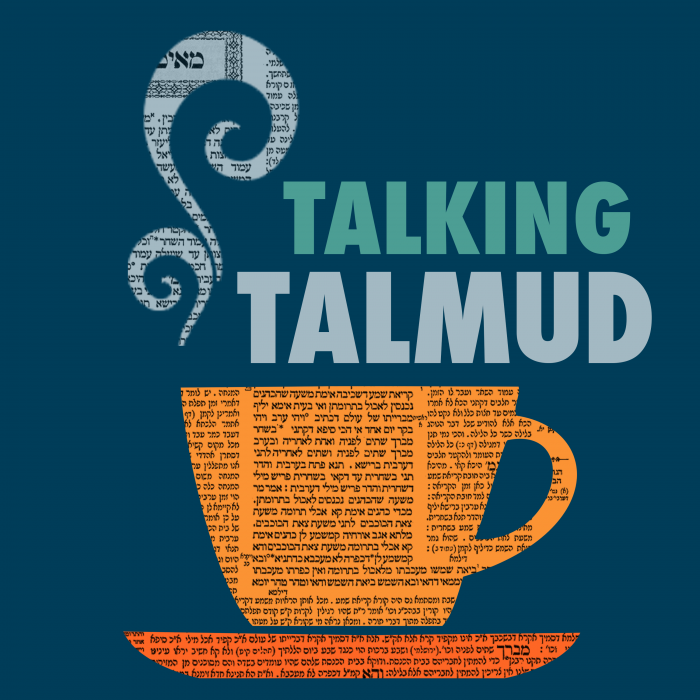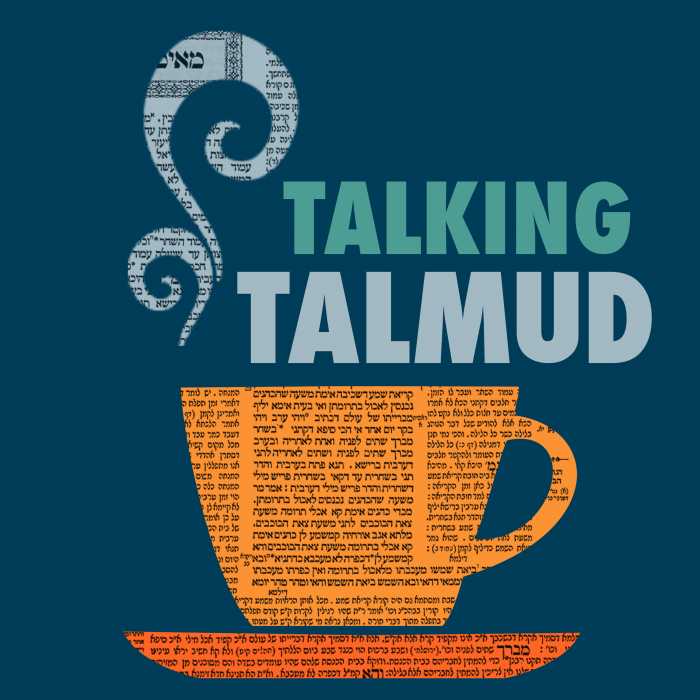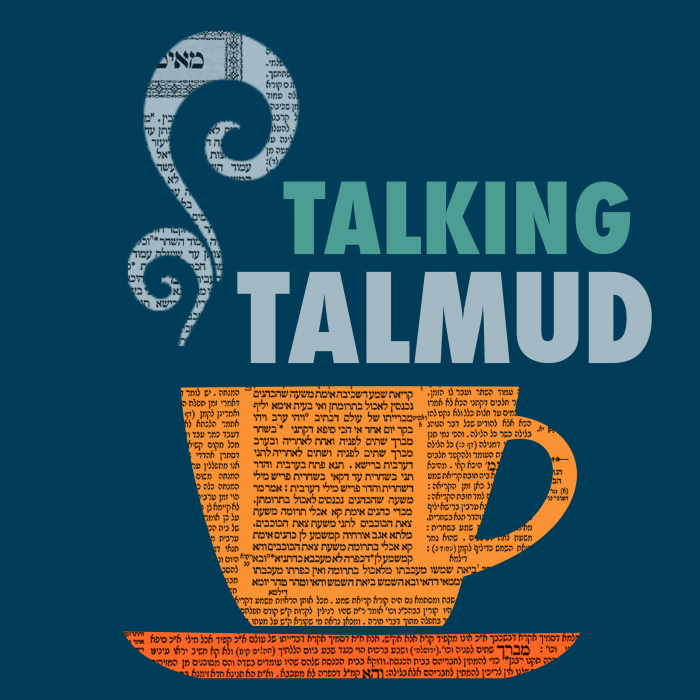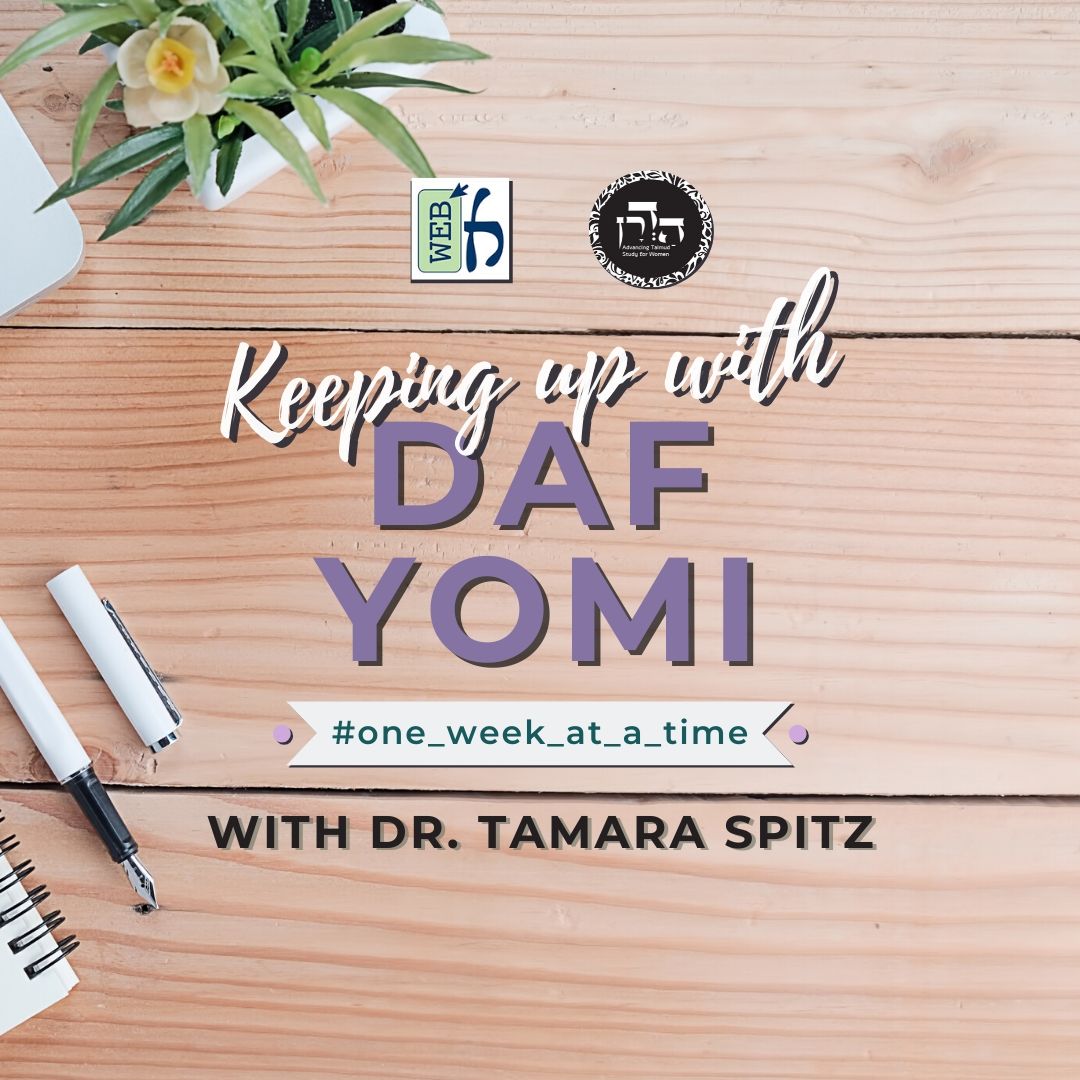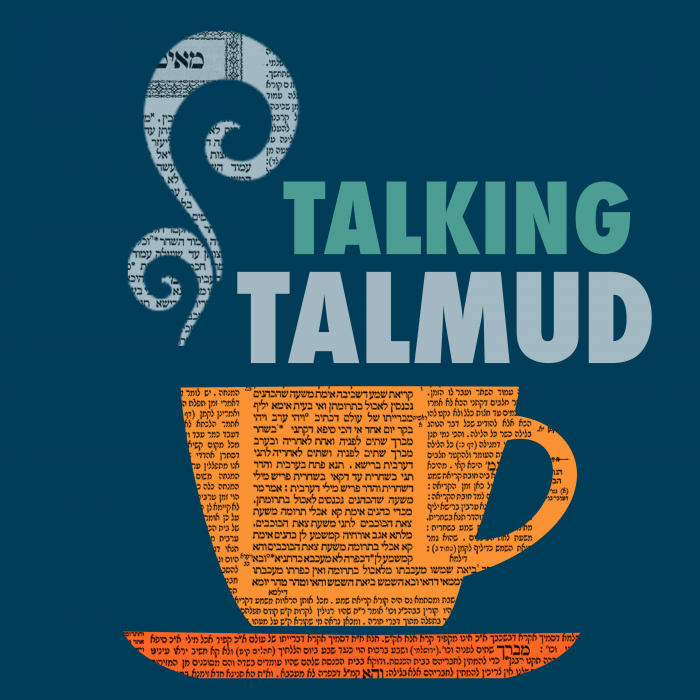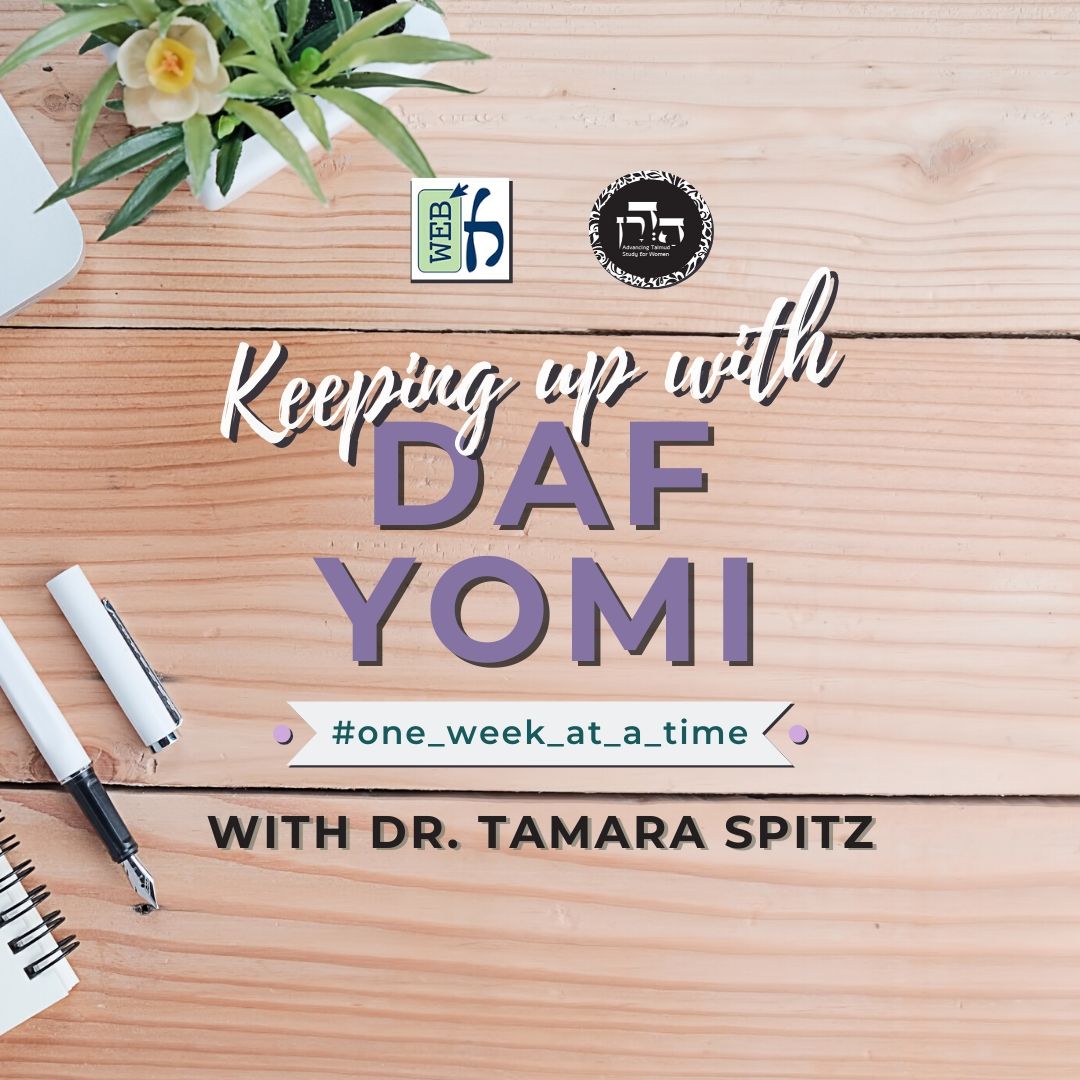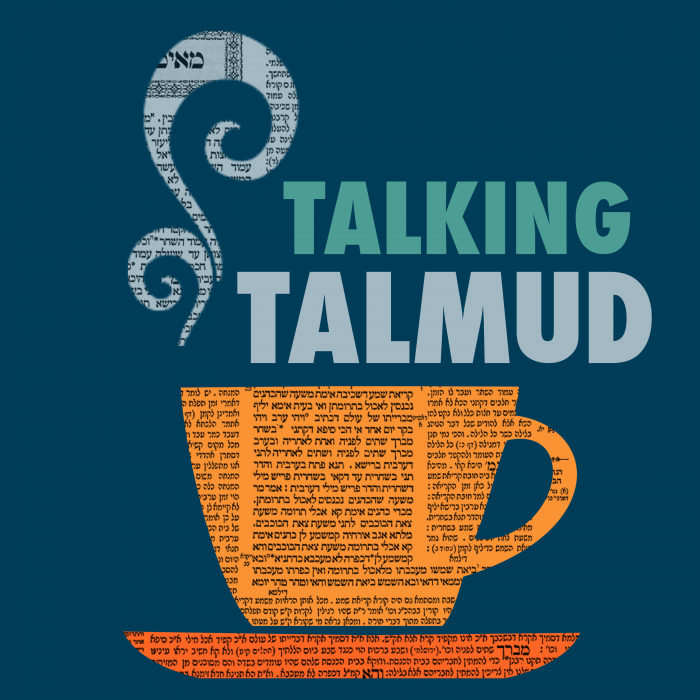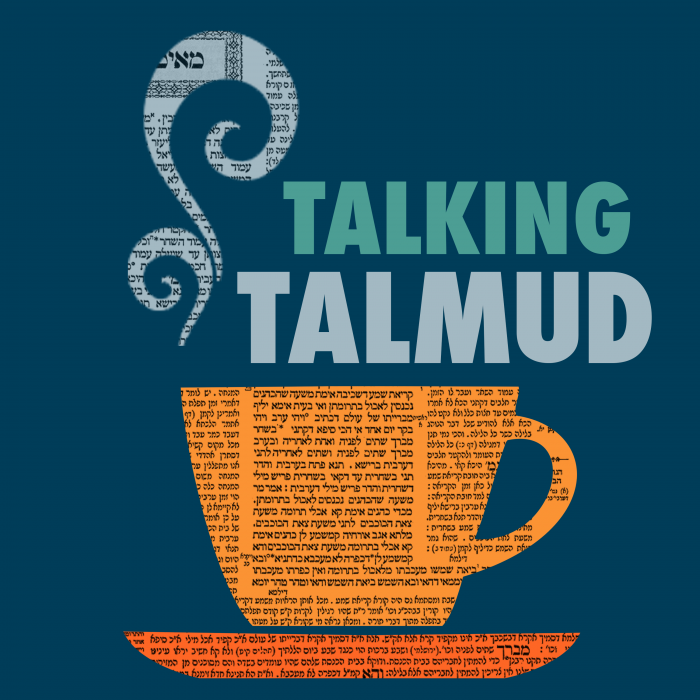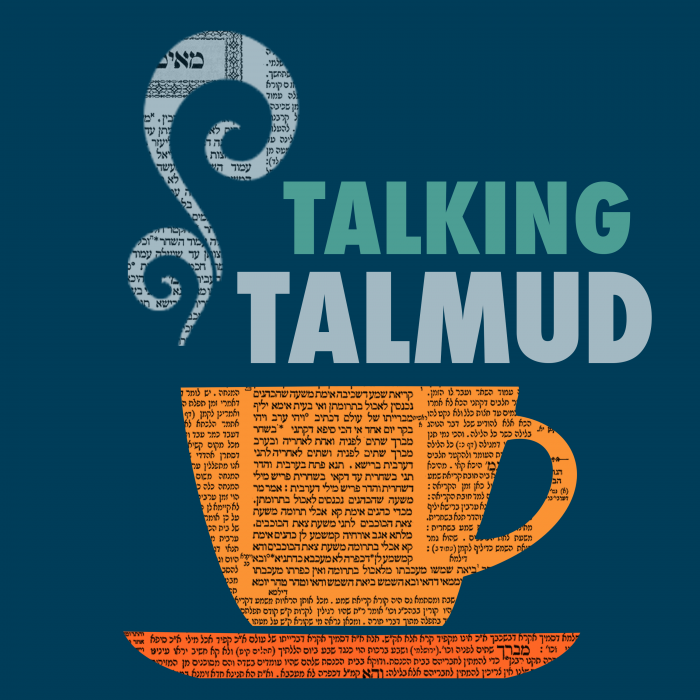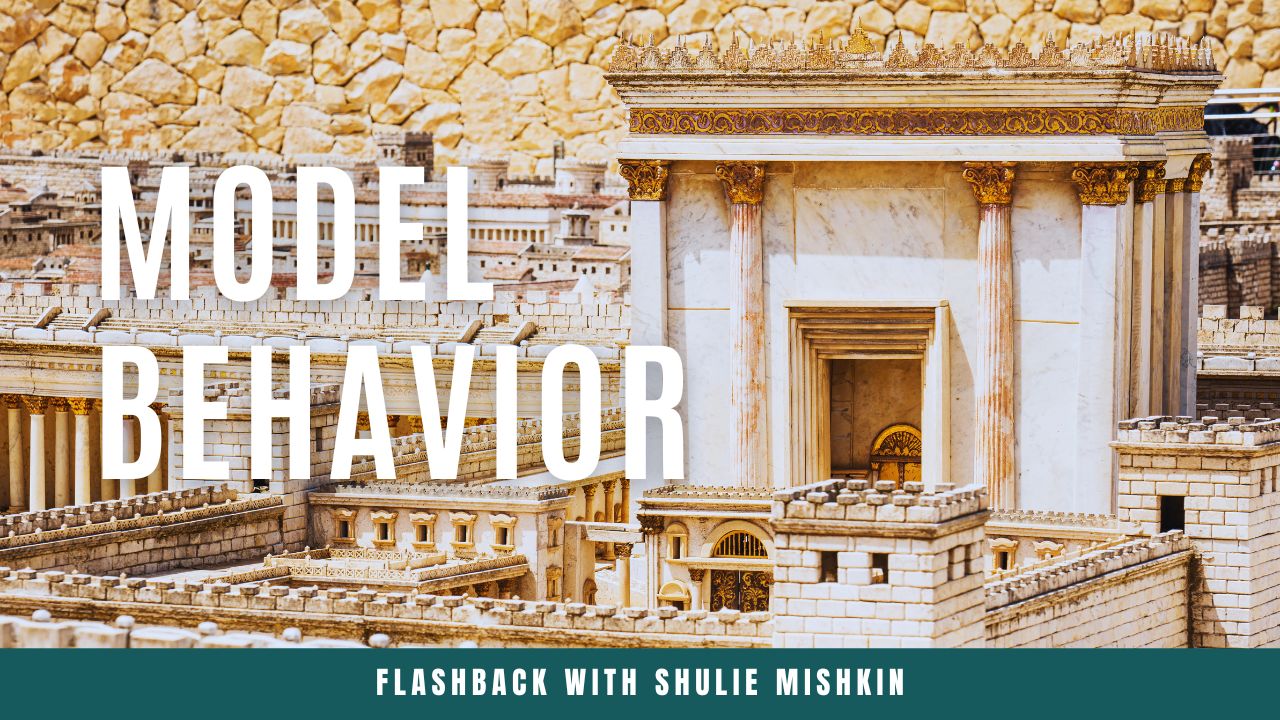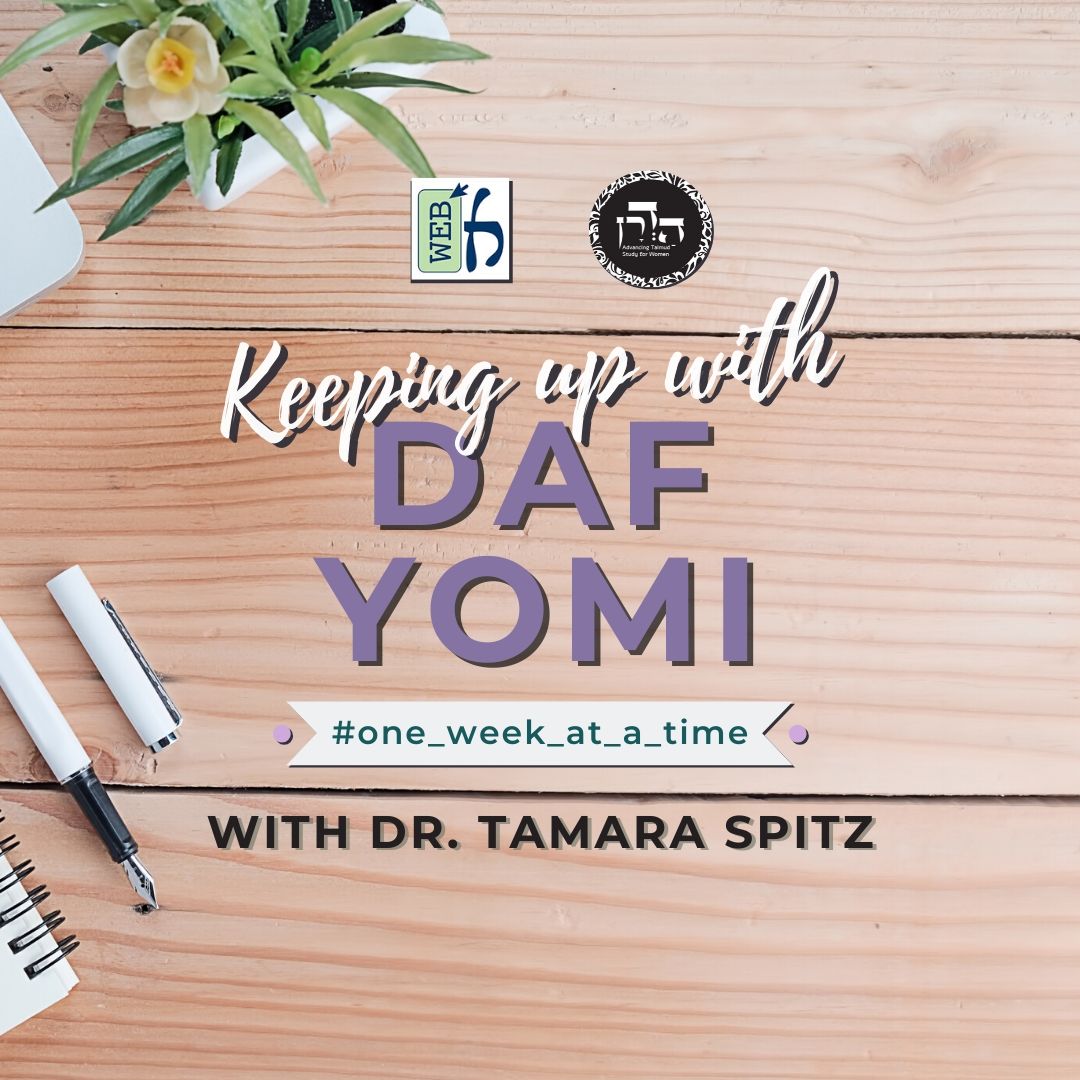Which sacrifices need to be waved and don’t need to be brought to the altar? How were the wavings performed? Are women obligated in waving?
This month’s learning is dedicated in memory of Rabbi Dr. Raymond Harari z”l, on his 1st yahrzeit. As an educator, principal of Yeshiva of Flatbush, and community rabbi, he inspired thousands with his wisdom, warmth, and unwavering commitment to Torah.
Want to dedicate learning? Get started here:

Today’s daily daf tools:
This month’s learning is dedicated in memory of Rabbi Dr. Raymond Harari z”l, on his 1st yahrzeit. As an educator, principal of Yeshiva of Flatbush, and community rabbi, he inspired thousands with his wisdom, warmth, and unwavering commitment to Torah.
Today’s daily daf tools:
Delve Deeper
Broaden your understanding of the topics on this daf with classes and podcasts from top women Talmud scholars.
New to Talmud?
Check out our resources designed to help you navigate a page of Talmud – and study at the pace, level and style that fits you.
The Hadran Women’s Tapestry
Meet the diverse women learning Gemara at Hadran and hear their stories.
Menachot 61
מרבה אני שאר מנחות שבאות בגלל עצמן ומוציא אני מנחת נסכים שאינה באה בגלל עצמה והלא מנחת כהנים ומנחת כהן משיח באות בגלל עצמן יכול יהו טעונות הגשה
The baraita answers: I include from this verse the other meal offerings, as they come due to themselves, i.e., they do not accompany other offerings, and I exclude the meal offering brought with libations, as it does not come due to itself but rather together with an animal offering. The baraita challenges: But the meal offering of priests and the meal offering of the anointed priest also come due to themselves, and according to this logic one might have thought that they too would require bringing near.
תלמוד לומר והגישה האי מיבעי ליה לגופה שטעונה הגשה מן והגיש והגישה
Therefore, the verse states: “And he shall bring it near to the altar” (Leviticus 2:8), to exclude the meal offering of priests and the meal offering of the anointed priest from the requirement of bringing near. The baraita raises a difficulty: But that verse is required for its own sake, i.e., to teach the basic halakha that a meal offering requires bringing near to the altar. The baraita answers: This halakha is derived from the fact that the verse could have stated just: “And he shall bring,” and instead it states: “And he shall bring it.”
ומה ראית לרבות שאר מנחות ולהוציא מנחת כהנים ומנחת כהן משיח מרבה אני שאר מנחות שיש מהן לאישים ובאות בגלל עצמן ויש מהן לכהנים ומוציא אני שתי הלחם ולחם הפנים שאין מהן לאישים ומנחת נסכים שאינה באה בגלל עצמה ומנחת כהנים ומנחת כהן משיח שאין מהן לכהנים
The baraita asks: And what did you see that led you to include the other meal offerings in the requirement of bringing near and to exclude the meal offering of priests and the meal offering of the anointed priest? The baraita answers: I include the other meal offerings, as there is a part of them burned in the fire of the altar, and they come due to themselves, and there is a part of them given to the priests to eat. And I exclude the two loaves and the shewbread, as there is no part of them burned in the fire. And I exclude the meal offering brought with libations, as it does not come due to itself, and I also exclude the meal offering of priests and the meal offering of the anointed priest, as there is no part of them given to the priests.
והרים יכול בכלי תלמוד לומר (ויקרא ו, ח) והרים ממנו בקומצו מה הרמה האמור להלן בקומצו אף הרמה האמור כאן בקומצו:
The baraita continues: The verse states: “And the priest shall take off from the meal offering its memorial-part, and shall make it smoke upon the altar, an offering made by fire, of a pleasing aroma to the Lord” (Leviticus 2:9). With regard to the phrase: “And the priest shall take off,” one might have thought the priest may perform this action even with a vessel. Therefore, the verse states: “And this is the law of the meal offering: The sons of Aaron shall offer it before the Lord, in front of the altar. And he shall take off from it his handful” (Leviticus 6:7–8). Just as the taking off that is stated below is performed specifically with the priest’s handful and not with a vessel, so too, the taking off that is stated here must be performed with the priest’s handful, not with a vessel.
מתני׳ אלו טעונות תנופה ואין טעונות הגשה לוג שמן של מצורע ואשמו והבכורים כדברי רבי אליעזר בן יעקב ואימורי שלמי יחיד וחזה ושוק שלהן
MISHNA: These are the items that require waving and do not require bringing near to the altar: The log of oil that accompanies the guilt offering of a recovered leper and his guilt offering itself, as it is written: “And the priest shall take one of the lambs and sacrifice it for a guilt offering, and the log of oil, and wave them for a wave offering before the Lord” (Leviticus 14:12); and the first fruits, in accordance with the statement of Rabbi Eliezer ben Ya’akov; and the sacrificial portions of the peace offerings of an individual and their breast and thigh, as it is written: “The thigh of heaving and the breast of waving shall they bring with the offerings of the portions consumed by fire, to wave it for a wave offering before the Lord” (Leviticus 10:15).
אחד אנשים ואחד נשים בישראל ולא באחרים שתי הלחם ושני כבשי עצרת
This requirement applies to peace offerings belonging both to men and to women, by male Jews and not by others. The Gemara will explain this seemingly contradictory statement on 61b. In addition, the two loaves and the accompanying peace offering of two lambs brought on Shavuot also do not require bringing near but do require waving, as it is written: “And the priest shall wave them with the bread of the first fruits for a wave offering before the Lord, with the two lambs” (Leviticus 23:20).
כיצד הוא עושה נותן שתי הלחם על גבי שני כבשים ומניח שתי ידיו למטה מוליך ומביא מעלה ומוריד שנאמר (שמות כט, כז) אשר הונף ואשר הורם תנופה היתה במזרח והגשה במערב תנופות קודמות להגשות
How does one perform this waving? He places the two loaves on top of the two lambs and places his two hands below the loaves and the lambs, extends the offerings to each of the four directions and brings them back, then raises and lowers them, as it is stated with regard to the waving of the ram of the inauguration of the priests: “Which is waved, and which is heaved up” (Exodus 29:27); i.e., waved back and forth, and heaved up and down. Waving was able to be performed to the east of the altar, but the bringing near of meal offerings had to be done to the west, i.e., the southwest corner of the altar. Also, with regard to all meal offerings, the wavings precede the actions of bringing near.
מנחת העומר ומנחת קנאות טעונות הגשה ותנופה לחם הפנים ומנחת נסכים אין טעונות לא הגשה ולא תנופה
The omer meal offering and the meal offering of jealousy brought by a sota require both bringing near and waving. The meal offering of the omer requires waving, as it is written: “And he shall wave the omer before the Lord” (Leviticus 23:11), and likewise with regard to the meal offering brought by a sota it is written: “And the priest shall take the meal offering of jealousy out of the woman’s hand and shall wave the meal offering before the Lord” (Numbers 5:25). The requirement of bringing near is derived as explained earlier. The shewbread and the meal offering brought with libations require neither bringing near nor waving.
רבי שמעון אומר ג’ מינין טעונין ג’ מצות שתים בכל אחת ואחת ושלישית אין בהן ואלו הן זבחי שלמי יחיד וזבחי שלמי ציבור ואשם מצורע
Rabbi Shimon says: There are three types of offerings that require performance of three mitzvot. Two mitzvot are performed on each and every one of them, but the third mitzva is not performed in their sacrifice, meaning that each of these offerings requires two out of the same three mitzvot, but not necessarily the same two as the others. And these are the three offerings: Peace offerings brought as gift offerings by an individual, communal peace offerings, i.e., the two lambs brought with the two loaves on Shavuot, and the guilt offering of a leper (see Leviticus 14:12–14).
זבחי שלמי יחיד טעונין סמיכה חיים ותנופה שחוטין ואין בהן תנופה חיים זבחי שלמי ציבור טעונים תנופה חיים ושחוטין [ואין בהם סמיכה] ואשם מצורע טעון סמיכה ותנופה חי ואין בו תנופה שחוט:
Peace offerings brought by individuals require placing hands on the head of the animals while the animals are still alive, and waving when they are slaughtered, but there is no obligation of waving them while they are alive. Communal peace offerings require waving both while the animals are still alive and after they are slaughtered, but there is no obligation of placing hands on them. And the guilt offering of a leper requires placing hands and waving while the animal is still alive, but there is no obligation of waving it after it is slaughtered.
גמ׳ תנו רבנן (ויקרא יד, יב) והקריב אותו לאשם ואת לוג השמן והניף אותם תנופה מלמד שטעונין תנופה כאחד
GEMARA: The mishna teaches that both the log of oil that accompanies the guilt offering of a recovered leper and the guilt offering itself require waving. The Sages taught in a baraita: The verse states: “And the priest shall take one of the lambs and sacrifice it for a guilt offering, and the log of oil, and wave them for a wave offering before the Lord” (Leviticus 14:12). The plural form “them” teaches that the log of oil and the offering require waving, and that this should be performed with both of them together.
ומנין שאם הניף זה בעצמו וזה בעצמו יצא תלמוד לומר והקריב אותו לאשם והניף יכול יניף ויחזיר ויניף תלמוד לומר תנופה ולא תנופות
And from where is it derived that if the priest waved this one by itself and that one by itself that he has fulfilled his obligation? The same verse states, in the singular form: “And sacrifice it for a guilt offering…and wave.” The Gemara inquires: Since parts of this verse are in the singular and parts are in the plural, one might have thought that he should wave both together, and then wave each one separately. Therefore, the verse states: “A wave offering,” which indicates that he should perform one waving, but not multiple wavings.
(ויקרא יד, יב) לפני ה’ במזרח והא אמר לפני ה’ יכול במערב
With regard to the phrase: “A wave offering before the Lord,” the baraita states that this teaches that waving can be performed to the east of the altar, as taught in the mishna. The Gemara raises a difficulty: But doesn’t the tanna of a baraita cited earlier in the tractate (19b) say, concerning a verse discussing the bringing near of a meal offering, which states: “Before the Lord” (Leviticus 6:7), that one might have thought one brings it to the west of the altar, as this is the side facing the Sanctuary? That tanna proceeds to explain that the phrase: “In front of the altar” (Leviticus 6:7), is a reference to the south, where one ascends the altar, and therefore the meal offering must be brought to the southwest corner. This indicates, though, that the expression “before the Lord” is a reference to the west.
אמרי הני מילי מנחה דאיקרי חטאת וחטאת טעונה יסוד וקרן דרומית מזרחית לא היה לו יסוד אבל הכא לפני ה’ קרינא ביה
The Gemara answers: The Sages say in response: This statement, that the expression “before the Lord” is a reference to the west and not to the east, applies only with regard to the meal offering, which is called “a sin offering,” as the verse states: “It is most sacred, like the sin offering” (Leviticus 6:10), and the sin offering requires its remaining blood to be poured out on the base of the altar. Therefore, the meal offering must also be brought to a part of the altar where there is a base, and as the southeast corner of the altar did not have a base, the meal offering must be brought to the southwest corner. In this manner one fulfills both the requirement of “in front of the altar,” i.e., to the south, and the requirement of “before the Lord.” But here, with regard to the log of oil and guilt offering of a leper, we call any side of the altar “before the Lord.”
והבכורים כדברי רבי אליעזר בן יעקב מאי רבי אליעזר בן יעקב דתניא (דברים כו, ד) ולקח הכהן לימד על הבכורים שטעונין תנופה דברי רבי אליעזר בן יעקב
§ The mishna teaches: The first fruits also require waving, in accordance with the statement of Rabbi Eliezer ben Ya’akov. The Gemara asks: What is the statement of Rabbi Eliezer ben Ya’akov, alluded to here? The Gemara answers that it is as it is taught in a baraita: The verse states with regard to the first fruits: “And the priest shall take the basket from your hand, and place it before the altar of the Lord your God” (Deuteronomy 26:4). This taught a halakha concerning the first fruits, that they require waving; this is the statement of Rabbi Eliezer ben Ya’akov.
מאי טעמא דרבי אליעזר בן יעקב גמר יד יד משלמים כתיב הכא ולקח הכהן הטנא מידך וכתיב התם (ויקרא ז, ל) ידיו תביאנה
The Gemara asks: What is the reason for the opinion of Rabbi Eliezer ben Ya’akov, as the verse is not explicitly referring to waving? The Gemara explains: The matter is derived by means of a verbal analogy from “hand,” written with regard to first fruits, and from “hand,” written with regard to a peace offering. It is written here, with regard to first fruits: “And the priest shall take the basket from your hand” (Deuteronomy 26:4), and it is written there: offering “He who offers his peace offering to God…his hands shall bring it, the fire of God…to raise it as a waving before God” (Leviticus 7:29–30).
מה כאן כהן אף להלן כהן ומה להלן בעלים אף כאן בעלים הא כיצד כהן מניח ידו תחת ידי בעלים ומניף
Just as here, in the case of first fruits, it is the priest who takes the basket in his hand and waves it, so too there, in the case of the peace offering, a priest performs the waving. Just as there, with regard to a peace offering, it is the owner who performs the waving, as it is written: “He who offers…his hands shall bring it,” so too here, the owner waves the first fruits. How so; how can the waving be performed by both the priest and the owner? The priest places his hands beneath the hands of the owner and waves the first fruits together with the owner.
ולימא נמי כדברי ר’ יהודה דתניא רבי יהודה אומר (דברים כו, י) והנחתו זו תנופה אתה אומר זו תנופה או אינו אלא הנחה
The Gemara asks: And let the mishna also say that the halakha that first fruits require waving is in accordance with the statement of Rabbi Yehuda, as it is taught in a baraita: Rabbi Yehuda says with regard to the verse written in the portion of first fruits: “And you shall place it before the Lord your God” (Deuteronomy 26:10), the reference is not to the placement of the fruits alongside the altar. Rather, this is a reference to waving the first fruits. Do you say that this is a reference to waving, or perhaps it is a reference only to actual placement of the first fruits?
כשהוא אומר והניחו הרי הנחה אמור הא מה אני מקיים והנחתו זו תנופה
He explains: When it states earlier: “And the priest shall take the basket from your hand, and place it before the altar of the Lord your God” (Deuteronomy 26:4), placement alongside the altar is already stated; how do I realize the meaning of: “And you shall place it”? This is a reference to waving. It is therefore clear that Rabbi Eliezer ben Ya’akov is not the only tanna who holds that there is a requirement of waving the first fruits, as indicated by the mishna; Rabbi Yehuda also maintains this opinion.
אמר רבא הואיל ופתח בו הכתוב תחלה רב נחמן בר יצחק אמר הואיל ורב גבריה
Rava says: The tanna of the mishna could have said that this halakha is in accordance with the opinion of Rabbi Yehuda. He preferred to ascribe this opinion to Rabbi Eliezer ben Ya’akov, since the verse opened first with the phrase cited by Rabbi Eliezer ben Ya’akov as the source for the requirement of waving the first fruits, as Rabbi Eliezer ben Ya’akov derives this halakha from the verse: “And the priest shall take the basket from your hand” (Deuteronomy 26:4); whereas Rabbi Yehuda derives it from the later verse: “And you shall place it before the Lord your God” (Deuteronomy 26:10). Rav Naḥman bar Yitzḥak says: The tanna preferred to cite this halakha in the name of Rabbi Eliezer ben Ya’akov since his strength in Torah is great, as the halakha is invariably in accordance with his opinion.
ואימורי שלמי יחיד וחזה ושוק שלהן אחד האנשים ואחד הנשים בישראל אבל לא באחרים מאי קאמר
§ The mishna teaches: And the sacrificial portions of the peace offerings of an individual, which are consumed on the altar, and their breast and thigh, which are eaten by the priests, require waving. This requirement applies to peace offerings belonging both to men and to women, by male Jews and not by others. The Gemara asks: What is the mishna saying? This statement is apparently self-contradictory, as the mishna first states that offerings brought by women require waving, and then it indicates that the offerings of others, including women, do not require waving.
אמר רב יהודה הכי קאמר אחד אנשים ואחד נשים קרבנן טעון תנופה ותנופה עצמה בישראל אבל לא בידי נשים
Rav Yehuda said that this is what the tanna of the mishna is saying: Both with regard to men and with regard to women, their offerings require waving, but the waving itself is performed only by male Jews, i.e., if the owner is a male he waves the offering together with a priest. But in the case of offerings brought by women, the female owner does not participate in the waving, as the priest alone performs the mitzva.
תנו רבנן בני ישראל מניפין ואין העובדי כוכבים מניפין בני ישראל מניפין ואין הנשים מניפות
§ The Sages taught in a baraita: With regard to peace offerings, the verse states: “Speak to the children of Israel, saying: He who offers his sacrifice of peace offerings to the Lord shall bring his offering out of his sacrifice of peace offerings. His own hands shall bring the offerings of the Lord made by fire. The fat with the breast he shall bring, that the breast may be waved for a wave offering before the Lord” (Leviticus 7:29–30). From the phrase: “The children of [benei] Israel,” it may be derived that the Jewish people wave their offerings, but gentiles who bring their offerings do not wave them. Furthermore, as the term “benei” can also mean: Sons of, it may be derived that only sons of Israel, i.e., males, wave their offerings, but that women do not wave their offerings.
א”ר יוסי מצינו שחלק הכתוב בין קרבן ישראל לקרבן עובדי כוכבים לקרבן נשים בסמיכה יכול נחלוק בתנופה
Rabbi Yosei says: We have found that the Torah differentiates between the offering of a Jew and the offering of gentiles and also between the offering of men and the offering of women, with regard to the obligation of placing hands. Placing hands is performed only on offerings of male Jews, not on those brought by gentiles and women. Therefore, one might have thought that a similar distinction should apply to the halakha of waving. Can we therefore differentiate between these different offerings also with regard to waving, and conclude that this requirement also applies only to offerings of male Jews, not those brought by gentiles or women?
לא מה לי חלק בסמיכה שהסמיכה בבעלים
Rabbi Yosei explains: No; this conclusion is incorrect, since what is the reason that the Torah differentiates between males Jews on the one hand and gentiles and women on the other hand, with regard to placing hands? The reason is that the case of placing hands is unique, as it is performed only by the owner of the offerings; he cannot appoint an agent to perform this ceremony on his behalf. Therefore, since gentiles and women may not perform this ceremony themselves, it is logical that their offerings are excluded from this requirement.
נחלוק בתנופה שהתנופה בכהנים אם כן מה תלמוד לומר בני ישראל בני ישראל מניפין ואין העובדי כוכבים מניפין בני ישראל מניפין ואין הנשים מניפות
By contrast, can we differentiate between males Jews on the one hand and gentiles and women on the other hand, with regard to waving as well? Since waving is also performed by priests, there is no reason to distinguish between offerings of male Jews and offerings brought by others, as the priests can wave those on behalf of their owners. If so, what is the meaning when the verse states: “The children of [benei] Israel”? It means that only the Jewish people wave their offerings, but gentiles who bring their offerings do not wave them. Only sons of [benei] Israel, i.e., males, wave their offerings, but women do not wave their offerings.
תניא אידך בני ישראל אין לי אלא בני ישראל גרים ועבדים משוחררין מנין תלמוד לומר המקריב
It is taught in another baraita: With regard to the phrase: “The children of Israel,” I have derived only that the requirement of waving applies to the children of Israel, i.e., those who were born Jewish. From where is it derived that the same applies to converts and to emancipated Canaanite slaves? The verse states, immediately after that phrase: “He who offers [hammakriv] his sacrifice of peace offerings” (Leviticus 7:29), which indicates that the halakha of waving applies to anyone who brings his offering to the Temple, including converts and emancipated slaves.
או אינו אלא זה כהן המקריב כשהוא אומר (ויקרא ז, ל) ידיו תביאנה הרי בעלים אמור הא כיצד כהן מניח ידיו תחת ידי הבעלים ומניף
The baraita challenges: Or perhaps this term does not serve to include converts and emancipated Canaanite slaves, but rather this is referring to the priest who sacrifices [hammakriv] the sacrificial portions on the altar? The baraita answers: This term cannot be referring to the priest, as when it states: “His own hands shall bring the offerings of the Lord made by fire. The fat with the breast he shall bring, that the breast may be waved for a wave offering before the Lord” (Leviticus 7:30), the requirement of waving by the owner is stated. Since the obligation of the owner to wave is stated in this verse, and the obligation of the priest is derived from the verbal analogy from the term “hand” written with regard to a peace offering, evidently both the owner and the priest must wave the offering. The Gemara asks: How so? The Gemara answers: The priest places his hands beneath the hands of the owner and waves the offering together with the owner.


